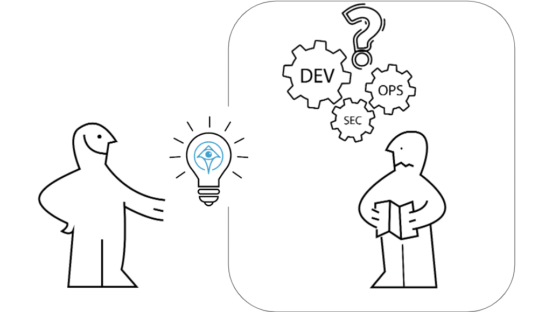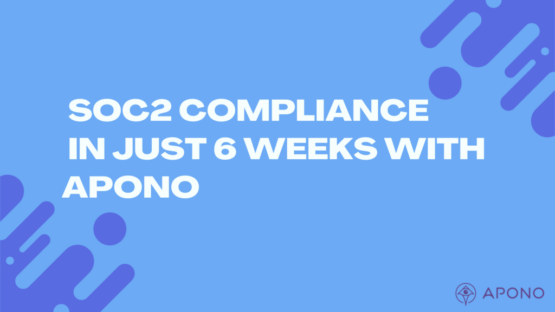The Role of Automation in Enforcing the Principle of Least Privilege

Ofir Stein
July 3, 2024

As businesses continue to expand their reliance on cloud security and privileged access management, the imperative to implement least privilege access in a manner both effective and efficient cannot be overstated. Yet, with the increasing complexity of information systems and the proliferation of privileged accounts, manually administering and enforcing the least privilege principle poses substantial challenges.
However, through automation, companies can now achieve fine-grained access control, facilitate just-in-time access, and manage temporary access with precision, thereby minimizing the potential blast radius of security incidents.
Understanding Least Privilege Access
The principle of least privilege (PoLP) is a critical concept in information security, mandating that individuals and systems have only the minimum levels of access necessary to perform their functions. This principle is essential for minimizing the risk of accidental or intentional data breaches and for maintaining a secure computing environment.
Definition and Key Principles
At its core, the principle of least privilege ensures that every module—be it a process, a user, or a program—has access only to the information and resources essential for its legitimate purpose. This approach limits the abilities of a user or program to interact with the system, thereby reducing the potential for misuse or accidental harm. For instance, a user account created solely for generating backups would not have permissions to install new software, as these rights are unnecessary for the task of backing up data.
Historical Context and Evolution
The concept of least privilege is not new and has evolved over time as systems have become more complex and interconnected. One of the earliest implementations of this principle can be traced back to the UNIX operating system, where the login.c program would start with super-user permissions and drop these privileges as soon as they were no longer necessary.
This principle has been foundational in the development of modern security architectures, influencing various frameworks and technologies. For example, the Zero Trust model incorporates the principle of least privilege at its core, requiring verification and validation of everything trying to connect to an organization’s systems before access is granted.
Implementing the principle of least privilege requires careful planning and continuous management to ensure that privileges are appropriately assigned and adjusted as needed. This involves auditing existing privileges, revoking unnecessary permissions, and monitoring for changes that might introduce risks. Organizations must also consider the dynamic nature of access requirements, as roles and responsibilities can evolve, necessitating adjustments to access privileges.
All in all, understanding and applying the principle of least privilege is essential for securing systems against unauthorized access and potential threats. By limiting users and programs to the minimum access necessary, organizations can significantly reduce their vulnerability to attacks and ensure the integrity and confidentiality of their data.
Challenges of Manual Least Privilege Access
Implementing the Principle of Least Privilege (PoLP) manually presents numerous challenges that can hinder an organization’s security framework. These challenges stem from various factors ranging from employee resistance to the intrinsic complexities of modern IT environments.
Common Issues and Pitfalls
- Employee Frustration: Manual enforcement of PoLP often leads to user and administrator frustration, especially in environments where speed and automation, such as DevOps, are prioritized. The friction caused by access restrictions can lead to increased administrative overhead and reduced productivity.
- Complexity of Computing Environments: With assets spread across on-premises, cloud, and hybrid environments, managing access becomes increasingly complex. Each platform may have its own set of access management tools and policies, which complicates the implementation of a unified least privilege strategy.
- Lack of Granularity: Most operating systems and environments do not support the fine-grained control necessary for effective least privilege implementation. This often results in either overprivileged accounts or hindered user functionality.
- Cloud Proliferation and Multi-Cloud Challenges: The ephemeral nature of cloud environments complicates tracking and managing permissions. Users often expect cloud services to have built-in security measures, which may not be sufficient for strict PoLP enforcement.
- Visibility and Control Over Privileged Accounts: A significant barrier to effective least privilege enforcement is the lack of visibility into all privileged accounts and credentials. Without comprehensive monitoring and management, privileged accounts can become a major security risk.
Case Studies and Real-World Examples
- SolarWinds Breach: Attackers exploited excessive privileges granted to the Orion application, which required global administrator access to function. This breach underscores the dangers of not adhering to the least privilege principle in application management.
- Verkada Breach: Compromised super admin credentials allowed attackers to access the live feeds of 150,000 security cameras. This incident highlights the risks associated with overprivileged accounts and the lack of proper access controls.
- NSA / Edward Snowden Breach: Snowden used his administrative privileges to access and leak significant amounts of classified information, demonstrating how excessive privileges can lead to massive data breaches.
- Target Breach: Hackers used credentials from a third-party vendor to access Target’s network, showing how third-party access can lead to significant breaches if not properly managed under the least privilege principle.
These examples illustrate the critical need for stringent control and regular audits of access privileges to prevent security breaches and ensure compliance with least privilege policies.
Benefits of Automating Least Privilege Access
Automating the enforcement of least privilege access yields significant benefits for organizations, chiefly in terms of security enhancements and operational efficiencies. By implementing systems that automate the provisioning and revocation of access, companies can better manage user permissions, ensuring that access is strictly aligned with job requirements. This minimization of excessive privileges not only reduces the attack surface but also limits the potential impact of security incidents.
Enhanced Security Outcomes
The principle of least privilege is fundamental in maintaining a secure IT environment. Automation plays a pivotal role in enforcing this principle effectively across an organization’s network. By automating access controls and permissions, the risk of unauthorized access is significantly diminished. This is crucial for preventing data breaches and ensuring that sensitive information remains protected. Automated systems can quickly adjust permissions in real-time, based on predefined policies that assess the current needs and threat landscape, thereby enhancing the overall security posture.
Automated least privilege systems prevent malware spread by restricting user access to execute potentially harmful applications. This containment is critical in mitigating the impact of cyber threats, as it limits the blast radius of any attack. For instance, if a user inadvertently triggers malware, the damage remains confined to the limited access available to that user’s account, rather than permeating throughout the network.
Moreover, the application of least privilege through automation supports compliance with various regulatory requirements. By providing detailed logs and records of access activities, organizations can demonstrate compliance during audits more effectively, showcasing their commitment to stringent security practices.
Operational Efficiency and Cost Savings
One of the most tangible benefits of automating least privilege access is the enhancement of operational efficiency. Manual management of access rights is not only time-consuming but also prone to errors, which can lead to both security vulnerabilities and operational bottlenecks. Automation alleviates the administrative burden on IT staff, freeing up their time to focus on more strategic tasks that add value to the business.
Furthermore, the implementation of just-in-time (JIT) access models ensures that permissions are granted precisely when needed and revoked immediately after use. This approach not only tightens security but also optimizes resource usage, preventing unnecessary access that could otherwise tie up valuable IT assets.
In conclusion, automating least privilege access is a strategic move that offers multiple advantages. It strengthens security measures, supports compliance efforts, and enhances operational efficiency, all of which are crucial for modern organizations facing a complex cybersecurity landscape.
Implementing Automated Least Privilege Access
Implementing automated least privilege access involves a series of strategic steps and the adoption of specific tools to ensure that access rights are strictly aligned with the operational needs of an organization. This approach not only enhances security but also improves operational efficiency and compliance.
Implementing automated least privilege access involves a series of strategic steps.
Strategies and Best Practices
To effectively implement automated least privilege access, organizations should consider the following strategies:
- Self-Service Access
Empowering employees through self-service portals allows them to request access as needed without excessive administrative delay. This reduces the broader permissions often requested out of convenience and aligns access more closely with immediate job requirements. - Decentralized Resource Ownership
By decentralizing the approval process, access requests can be evaluated and approved by direct managers or resource owners who understand the specific needs of their operations. This approach reduces the burden on IT departments and speeds up the access management process. - Policy-Based Access
Implementing policy-based access control systems where access rights are automatically determined based on predefined policies ensures that decisions about access are consistent, timely, and aligned with organizational security policies. This method leverages attributes such as role, department, and data sensitivity. - Automatic Access Provisioning
Utilizing API-driven tools for access provisioning allows organizations to automate the granting and revocation of access rights. This not only ensures a rapid response to access requests but also the immediate withdrawal of access once it is no longer needed, thereby adhering strictly to the principle of least privilege.
These strategies should be supported by continuous monitoring and adjustment to address the evolving needs and security landscape of the organization.
Tools and Software Recommendations
For the successful implementation of automated least privilege access, the following tools and software are highly recommended:
- Identity and Access Management (IAM) Solutions: Tools such as Okta or Microsoft Azure Active Directory provide robust frameworks for managing identities and access rights across various resources.
- Privileged Access Management (PAM) Software: Solutions like CyberArk, Apono or Thycotic Secret Server help manage and monitor privileged accounts, which are often the target of cyber attacks.
- Access Rights Management (ARM) Tools: Systems like Apono or SolarWinds Access Rights Manager can automate the detection and management of user permissions, ensuring that only necessary privileges are granted.
- Workflow Automation Platforms: Tools like ServiceNow or custom solutions developed with no-code platforms can automate the workflows associated with access requests, approvals, and provisioning.
By integrating these tools into their security infrastructure, organizations can significantly enhance their ability to manage access rights efficiently and securely, minimizing the risk associated with over-privileged accounts and ensuring compliance with relevant regulations.
Conclusion
Through the comprehensive exploration of the principle of least privilege and the pivotal role of automation in its enforcement, it becomes abundantly clear that leveraging technological solutions is not only beneficial but essential for modern organizations aiming to secure their digital landscapes. Automation enhances compliance, refines access control, and simplifies the management of privileges, thereby effectively diminishing the risk of security breaches. This shift towards automated systems underscores a move from manual, error-prone processes to more resilient, efficient, and secure operations, significantly fortifying an organization’s defense against cyber threats.




